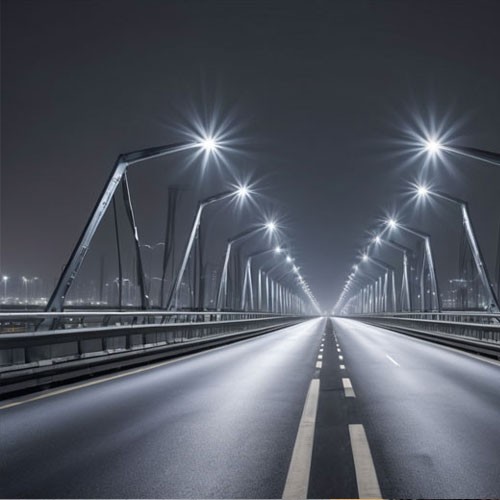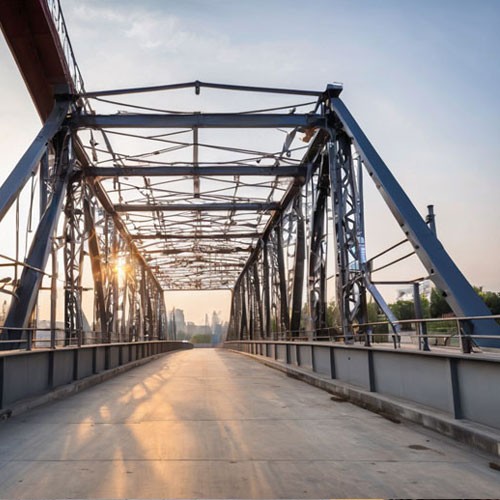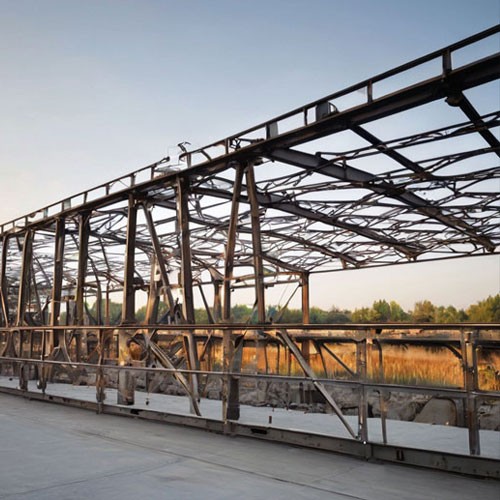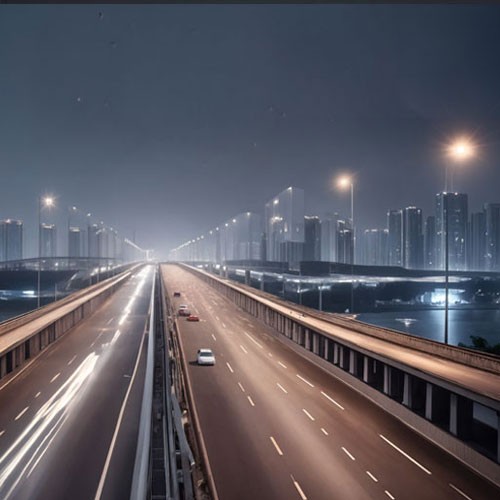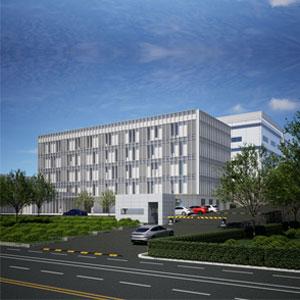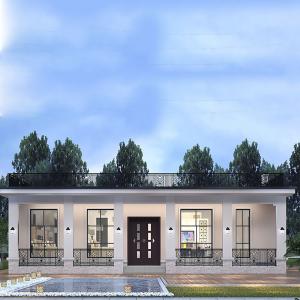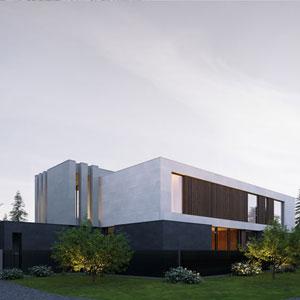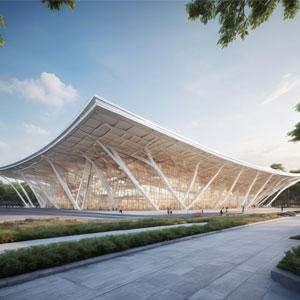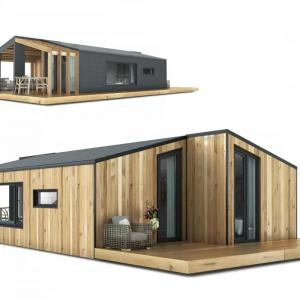Description
In the night of the city, a bridge is like a steel dragon spanning across the river, and its smooth lines and solid structure are amazing. The core component of this bridge, the bridge steel structure, carries the weight of countless vehicles and pedestrians, ensuring smooth and safe traffic.
The design of the bridge steel structure is the soul of the entire bridge construction. Designers need to consider many factors, including the span of the bridge, the load it bears, the geological conditions and climate environment of the area where it is located. From an aesthetic point of view, the design of the bridge steel structure often pursues simple and smooth lines so that it can blend harmoniously with the surrounding environment. For example, in some tourist cities, the steel structure design of the bridge will incorporate local cultural elements, making it a unique landscape.
In terms of scientific calculation, advanced computer simulation technology is used to accurately calculate the stress distribution and deformation of the steel structure under different load combinations. Ensure that every steel beam and every connection node can maintain the stability of the structure while bearing huge pressure. For example, the steel structure design of a large-span bridge needs to take into account the impact of natural factors such as wind and earthquake on the bridge, and resist the impact of these external forces through reasonable structural design.
2. Bridge steel structure processing - strict control of precision and quality
Bridge steel structure processing is a key step in turning the design blueprint into reality. During the processing, the quality requirements of steel are extremely high. First of all, high-quality steel that meets national standards should be selected to ensure that the performance indicators such as strength, toughness and weldability of steel meet the requirements of bridge construction.
In terms of processing technology, advanced cutting, welding and forming technologies are used. For example, high-precision CNC cutting technology can ensure that the cutting size of steel is accurate to the millimeter level, avoiding subsequent installation problems caused by cutting errors. The welding process is the focus of bridge steel structure processing. Professional welders use appropriate welding methods and welding materials to ensure the quality and strength of the weld. Each weld must undergo strict non-destructive testing, such as ultrasonic testing, radiographic testing, etc., to ensure that the welding quality is foolproof.
3. Bridge steel structure construction - both efficiency and safety
Bridge steel structure construction is a large and complex project. At the construction site, we must first ensure the firmness of the foundation project. The installation of steel structures requires the cooperation of large lifting equipment, such as crawler cranes, truck cranes, etc., to accurately hoist the prefabricated steel structure components into place.
During the construction process, safety is the top priority. Construction workers need to strictly abide by the safety operating procedures and wear protective equipment such as safety helmets and safety belts. At the same time, the construction sequence should be arranged reasonably to ensure the installation progress and quality of the steel structure. For example, in the cantilever assembly construction, the installation position and angle of each section of the steel structure should be accurately controlled to ensure that the line shape of the bridge meets the design requirements.
4. Anti-corrosion of bridge steel structures-the key guarantee for extending service life
Because the steel structure of the bridge is exposed to the natural environment for a long time, it is prone to corrosion. Therefore, anti-corrosion measures are essential. Common anti-corrosion methods include coating anti-corrosion and cathodic protection.
Coating anti-corrosion is to apply anti-corrosion paint on the surface of the steel structure to form a protective film to prevent oxygen and moisture from contacting the steel. When choosing anti-corrosion paint, the weather resistance, adhesion and corrosion resistance of the paint should be considered. Cathodic protection uses an external current or sacrificial anode to make the steel structure a cathode, thereby avoiding corrosion of the steel.
V. Inspection and reinforcement of bridge steel structures - a necessary means to ensure safe operation
During long-term use, bridge steel structures may be damaged due to fatigue, overload and other reasons. Therefore, regular inspection is essential. Inspection methods include appearance inspection, non-destructive testing and load testing.
Appearance inspection can find obvious damage on the surface of the steel structure, such as coating peeling, steel deformation, etc. Non-destructive testing techniques, such as magnetic particle testing and eddy current testing, can detect defects inside the steel. Load testing can evaluate the performance of bridge steel structures under actual loads.
When the inspection finds that the bridge steel structure has safety hazards, it needs to be reinforced. Reinforcement methods include increasing the cross-section of the component, pasting steel plates or carbon fibers, etc. Through these reinforcement measures, the bearing capacity of the bridge steel structure can be restored to ensure the safe operation of the bridge.
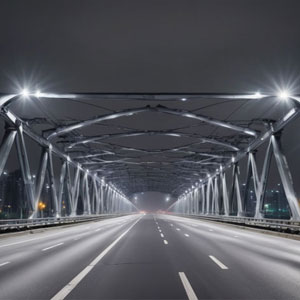
The design of the bridge steel structure is the soul of the entire bridge construction. Designers need to consider many factors, including the span of the bridge, the load it bears, the geological conditions and climate environment of the area where it is located. From an aesthetic point of view, the design of the bridge steel structure often pursues simple and smooth lines so that it can blend harmoniously with the surrounding environment. For example, in some tourist cities, the steel structure design of the bridge will incorporate local cultural elements, making it a unique landscape.
In terms of scientific calculation, advanced computer simulation technology is used to accurately calculate the stress distribution and deformation of the steel structure under different load combinations. Ensure that every steel beam and every connection node can maintain the stability of the structure while bearing huge pressure. For example, the steel structure design of a large-span bridge needs to take into account the impact of natural factors such as wind and earthquake on the bridge, and resist the impact of these external forces through reasonable structural design.
2. Bridge steel structure processing - strict control of precision and quality
Bridge steel structure processing is a key step in turning the design blueprint into reality. During the processing, the quality requirements of steel are extremely high. First of all, high-quality steel that meets national standards should be selected to ensure that the performance indicators such as strength, toughness and weldability of steel meet the requirements of bridge construction.
In terms of processing technology, advanced cutting, welding and forming technologies are used. For example, high-precision CNC cutting technology can ensure that the cutting size of steel is accurate to the millimeter level, avoiding subsequent installation problems caused by cutting errors. The welding process is the focus of bridge steel structure processing. Professional welders use appropriate welding methods and welding materials to ensure the quality and strength of the weld. Each weld must undergo strict non-destructive testing, such as ultrasonic testing, radiographic testing, etc., to ensure that the welding quality is foolproof.
3. Bridge steel structure construction - both efficiency and safety
Bridge steel structure construction is a large and complex project. At the construction site, we must first ensure the firmness of the foundation project. The installation of steel structures requires the cooperation of large lifting equipment, such as crawler cranes, truck cranes, etc., to accurately hoist the prefabricated steel structure components into place.
During the construction process, safety is the top priority. Construction workers need to strictly abide by the safety operating procedures and wear protective equipment such as safety helmets and safety belts. At the same time, the construction sequence should be arranged reasonably to ensure the installation progress and quality of the steel structure. For example, in the cantilever assembly construction, the installation position and angle of each section of the steel structure should be accurately controlled to ensure that the line shape of the bridge meets the design requirements.
4. Anti-corrosion of bridge steel structures-the key guarantee for extending service life
Because the steel structure of the bridge is exposed to the natural environment for a long time, it is prone to corrosion. Therefore, anti-corrosion measures are essential. Common anti-corrosion methods include coating anti-corrosion and cathodic protection.
Coating anti-corrosion is to apply anti-corrosion paint on the surface of the steel structure to form a protective film to prevent oxygen and moisture from contacting the steel. When choosing anti-corrosion paint, the weather resistance, adhesion and corrosion resistance of the paint should be considered. Cathodic protection uses an external current or sacrificial anode to make the steel structure a cathode, thereby avoiding corrosion of the steel.
V. Inspection and reinforcement of bridge steel structures - a necessary means to ensure safe operation
During long-term use, bridge steel structures may be damaged due to fatigue, overload and other reasons. Therefore, regular inspection is essential. Inspection methods include appearance inspection, non-destructive testing and load testing.
Appearance inspection can find obvious damage on the surface of the steel structure, such as coating peeling, steel deformation, etc. Non-destructive testing techniques, such as magnetic particle testing and eddy current testing, can detect defects inside the steel. Load testing can evaluate the performance of bridge steel structures under actual loads.
When the inspection finds that the bridge steel structure has safety hazards, it needs to be reinforced. Reinforcement methods include increasing the cross-section of the component, pasting steel plates or carbon fibers, etc. Through these reinforcement measures, the bearing capacity of the bridge steel structure can be restored to ensure the safe operation of the bridge.
Bridge steel structures play a vital role in modern bridge construction. From design, processing, construction to anti-corrosion, testing and reinforcement, every link is closely linked to jointly guarantee the quality and safety of the bridge. With the continuous advancement of science and technology, the technical level of bridge steel structure will continue to improve, providing a more solid guarantee for people's travel and urban development.

